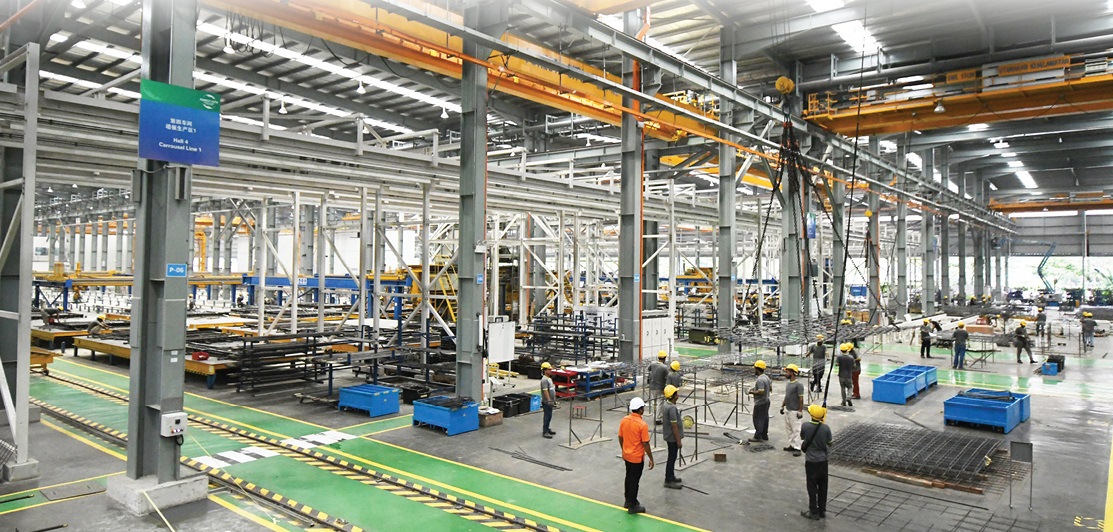Vast majority of construction companies do not have sufficient internal resources to implement or industrial property construction, so investment success depends on the funds attracted in financial markets. However, against the background of a difficult economic situation and energy crisis, banks are reluctant to offer industrial property construction loans projects, which are associated with significant risks.
Sources of financing the construction of industrial Property
When a project owner or developer company chooses ways to finance its projects, it proceeds from the need to solve the main problem of financing industrial construction. The question is how to secure loans for a long period of construction (usually about 3-5 years) without an immediate return, while continuing to bear a heavy tax burden and fulfilling its obligations in an unpredictable crisis environment?
Based on constraints mentioned above, developers or project owners can use the following ways of financing projects;
•Establishment of a construction financing fund, etc.
•Long-term loans from financial institutions, primarily from large banks.
•Obtaining an advance from a potential buyer with subsequent long-term contracts.
•Placement of bonds among the future owners of an industrial facility.
Viola Funding Limited can offer attracting funds to finance industrial property construction loans at a relatively friendly terms.
Loans for the construction of industrial Facilities
Industrial facilities are considered a relatively low-risk long-term investment with high returns. However, high capital costs make self-financing of large projects difficult for most developers, especially given the long period between the first costs and the return on investment. This gap causes the spread of attracting financial external resources to industrial construction projects.
The use of loans for industrial construction is critical, especially when it comes to capital-intensive projects. With, for example, $50 million, a developer can independently implement one project with a budget of $50 million, or it can attract 80% external financing to complete five similar projects within the same time frame.
The use of loans for industrial construction is critical, especially when it comes to capital-intensive projects. With, for example, $50 million, a developer can independently implement one project with a budget of $50 million, or it can attract 80% external financing to complete five similar projects within the same time frame.
Currently, the long-term loan is the main source of external financing for industrial construction projects.
To obtain a loan, an industrial developer must have certain experience, sufficient financial potential, and have appropriate assets on its balance sheet.
Conditions setforth for lending to industrial construction are as follows:
•Loan security.
•Interest rate (loan cost).
•Suggested loan term.
•The share of the developer / investor’s funds in the project.
•The stage at which the bank is ready to provide a loan.
Principles of financing industrial developers; the basic
Financing of industrial developers is based on attracting the most affordable financial resources, maintaining the optimal ratio of various financial sources in order to ensure efficient construction activities.
Financing companies engaged in the construction of industrial buildings involves optimizing the capital structure in order to achieve the greatest efficiency in the implementation of long-term capital-intensive projects and maintaining sufficient liquidity at all stages of activity.
The attraction of certain financial sources by construction companies depends primarily on the scale of their activities, profitability, strategic goals and tax preferences:
•Construction companies are building up long-term liabilities based on tax preferences. However, with regard to short-term debt financing, tax benefits are considered to be low.
•Long-term debt capital is the most risky source of financing for construction companies, therefore, with an increase in the amplitude of fluctuations in cash flows, they tend to reduce the share of long-term borrowings.
•Long-term debt capital is the most risky source of financing for construction companies, therefore, with an increase in the amplitude of fluctuations in cash flows, they tend to reduce the share of long-term borrowings.
Construction companies use a wide range of sources of capital within the framework of current legislation and standards. It is typical for industrial developers to use such a large source of financial resources as the state and local budgets.
Contact us for financing of all related industrial property construction loans. Viola Funding Limited delivers.
eMAIL:[email protected]
Website:https://viola-funding.com/
